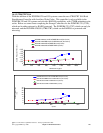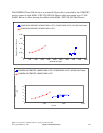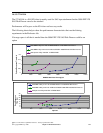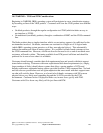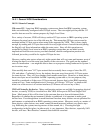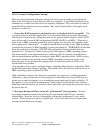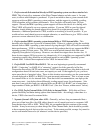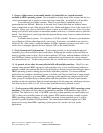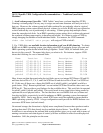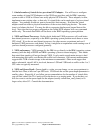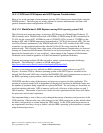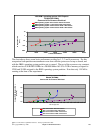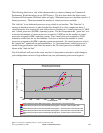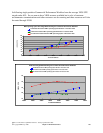3. Prefer external disks attached directly to IBM i operating system over those attached via
VIOS This is basically a statement of the Fibre Channel adapter and who owns it. In some
cases, it affects which adapter is purchased. If you do not need to share a given external disk's
resources with non-IBM i operating system partitions, and the support is available, avoiding
VIOS altogether will give better performance. First, the disks will usually have 520 byte
support. Second, the IBM i operating system support will know the device it is dealing with.
Third, VIOS will typically run as a separate partition. If you run VIOS as your first shared
partition, simply turning on shared support costs about five to eight percent overall. The
alternative, a dedicated partition for VIOS, would be a nice thing to avoid if possible. If you
would not have used shared processor support otherwise, or would have to give VIOS a whole
processor or more otherwise, this is a consideration.
4. Prefer standard IBM i operating system internal disks to VIOS internal disks. This
describes who should own a given set of internal disks. If there is a choice, giving the available
internal disks to IBM i operating system instead of going through VIOS will result in noticeably
better performance. VIOS is a better fit for external disk products that do not support the IBM i
operating system 520 byte sector. The VIOS case would include internal disks that came
originally from pSeries or System p. However, one should investigate those devices also. If
those devices support 520 byte sectors (or, alternatively, if it is stated they are supported by IBM
i operating system), they should be reconfigured instead as native IBM i operating system
internal disks. It should be exceptional to use VIOS for internal disks.
5. Prefer RAID 1 or RAID 10 to RAID 5. We are now beginning to generally recommend
RAID 1 ("mirroring") or RAID 10 (a "mirroring" variant) for disks generally in On-line
Transaction Processing (OLTP) environments. OLTP environments have long had to deal with
configurations based on total arm count, not capacity as such. If that applies to you, you have
extra space that is of marginal value. Those in this situation can nowadays use the same number
of arms deployed as RAID 1 or RAID 10 to gain increased performance. This is at least as true
for external disks as it is for internal disks. Note that in this recommendation, one deploys the
same arm count -- just deploys them differently, trading unused space for performance. Also
note that if one goes this route, two physical disks per RAID 10 or RAID 1 set is better than a
larger number of disks per RAID 1 or RAID 10 set. (See also “Ensure, within reason” below).
6. For VIOS, Prefer External Disks (SAN disks) to Internal Disks. SAN disks will have
greater flexibility and better tuning options than internal disks. Accordingly, when there is a
choice, VIOS is best used for external disks.
7. Separate Journal ASPs from other ASPs. Generally, we have long recommended that a
given set of data base files (aka SQL tables) keep its set of journal receivers in a separate ASP
from the data base ASP or ASPs. With VIOS, we recommend that this continue to the extent
feasible. It may be necessary to share things like Fibre Channel links, but it should be possible
to have separate physical devices at the very least. To the extent possible, arrange for journal to
use its own internal buses also (of whatever sort the device provides).
IBM i 6.1 Performance Capabilities Reference - January/April/October 2008
© Copyright IBM Corp. 2008 Chapter 14 DASD Performance 218



